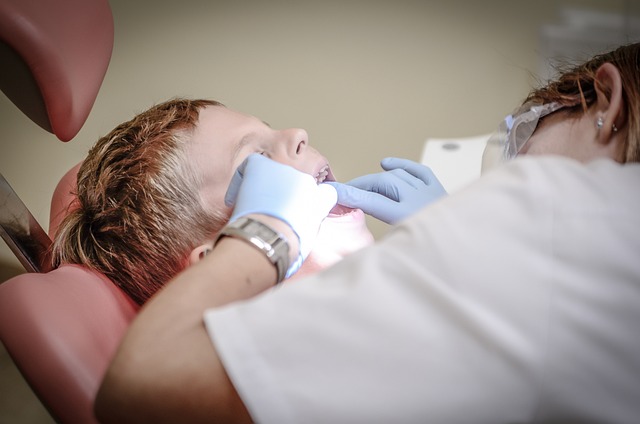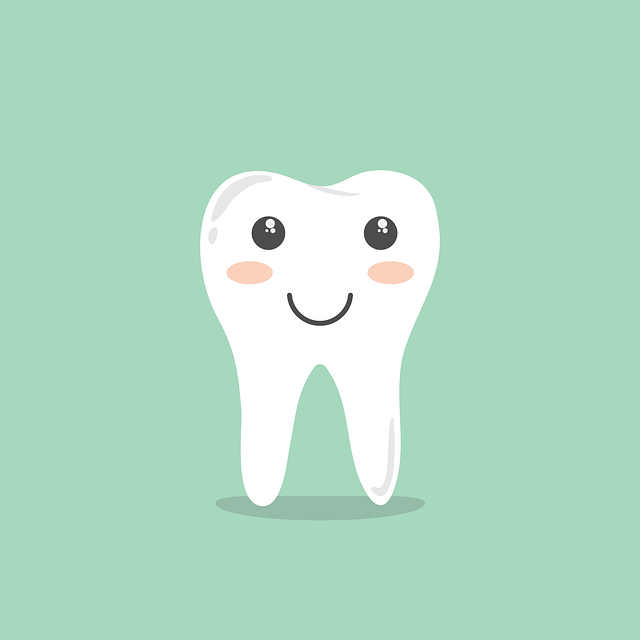Tooth Extraction: Understanding the Need for Bone Grafting
Welcome to our informative article on tooth extraction and the importance of bone grafting. Whether you are preparing for a tooth extraction or simply curious about the dental procedure, this insightful piece will provide you with a comprehensive understanding of why bone grafting may be necessary. At first, the idea of???? bone grafting might seem daunting, but fear not! We will ????take you through the process, explaining its significance in maintaining dental health and ensuring successful future dental procedures. So, sit???? back, relax, and let’s delve into the need for bone grafting ????following tooth extraction in a friendly and easy-to-understand manner.
1. Introduction: Exploring the Importance of Tooth Extraction and Bone Grafting
Are you considering tooth extraction and bone grafting? In this post, we will explore???? the importance of???? these dental procedures and how they can benefit your oral health. Whether you have a severely???? damaged tooth ????or are preparing???? for a dental implant, understanding the significance of tooth extraction and bone grafting is essential for making informed decisions about your dental care.
First and foremost, tooth extraction is a crucial step in maintaining your overall oral health. When a tooth is severely decayed, infected, or damaged beyond repair, extracting ????it ????becomes necessary. Leaving such a tooth in place can lead to various problems, including???? pain, infection, and damage to ????neighboring teeth. By removing the problematic tooth, ????you pave the way ????for healthier teeth and gums, preventing???? further complications in the long run.
2.???? Understanding Tooth Extraction: When and Why it is Necessary
There may be instances when a tooth extraction ????becomes necessary to maintain your dental health. Understanding when and why this procedure is needed can help alleviate any concerns you may have. Here are some key points to consider:
1. Severe tooth decay: If a tooth has experienced extensive decay that cannot be addressed through fillings or root canals, extraction may be the best solution. Removing the decayed tooth can prevent the spread of infection and reduce the risk of further damage to neighboring teeth.
2. Overcrowding:???? In cases where your teeth are severely overcrowded, your dentist may recommend tooth extraction to create more space. This may be necessary before orthodontic treatment such as braces or aligners, allowing for better alignment of your teeth and a more harmonious bite.
3. ????The Effects of Tooth Extraction on Jawbone Health: Why Bone Grafting is Crucial
The extraction of a tooth can have significant impacts on the health of the jawbone. When a tooth???? is removed, the underlying bone that once supported it may start to deteriorate. This bone loss can occur due to various factors such as the absence of???? natural stimulation that the tooth provided, as well as the loss of blood supply to the area. If left ????untreated, jawbone degeneration can lead to long-term consequences, including facial collapse and difficulty with chewing and speaking.
Fortunately, bone grafting presents an excellent solution to mitigate the???? negative effects of tooth extraction. By utilizing bone graft material, the jawbone can be regenerated and restored to its natural strength and density. Bone grafting involves placing the graft material in the empty socket after the extraction, which allows for new bone growth and prevents bone shrinkage. This ensures that the jawbone retains its shape and ????volume, supporting the surrounding teeth and maintaining facial aesthetics.
- Preservation of Facial Structure: Bone???? grafting helps to ????prevent facial collapse, which is a common consequence of untreated jawbone degeneration. With a preserved jawbone, the face maintains its natural shape and contours, preventing a sunken appearance.
- Promotion of Dental Implants: Dental implants require a strong and healthy jawbone for successful placement. Bone grafting provides the necessary bone structure to anchor the implants securely, allowing patients to regain full dental functionality and aesthetics.
- Improved Chewing Ability: A regenerated jawbone offers better support for the remaining teeth, enabling efficient chewing and digestion. Restoring jawbone health through bone grafting positively impacts a person’s overall oral health and well-being.
4. What is Bone Grafting? A Closer Look at this Important Dental Procedure
Bone ????grafting is a crucial dental procedure that involves the transplantation of bone tissue to repair or rebuild an area in the jaw where a tooth has been lost or extracted. It is a common technique used in implant dentistry to ensure a secure ????foundation for dental implants.
In essence, bone grafting works by stimulating the body’s natural ability to regenerate bone tissue.???? During the procedure, a small amount of bone???? is taken from another part of your body or ????a bone bank and carefully placed in the targeted area. This ????transplanted bone then serves as a scaffold for new bone growth, eventually integrating with your existing???? jawbone.
- It’s important to note that bone grafting isn’t always necessary for everyone receiving dental implants. ????It???? primarily???? depends on the condition of your jawbone and the number???? of teeth requiring implants.
- Bone grafts can be sourced from your own ????body (known as an autograft), a donor (allograft), ????or synthetic materials (alloplastic grafts).
- The success rate of bone???? grafting procedures is quite high, thanks to advancements in dental technology and materials.
- Recovery varies from person to person, but typically the process can take several months to allow the newly transplanted bone to fully fuse with your existing jawbone.
If you’re considering dental implants or have been advised to undergo bone grafting, rest assured that this procedure is a safe and effective way to restore your smile. By providing a ????solid???? foundation, bone grafting helps ensure the longevity and success of your dental implants, giving you the confidence to eat, speak, and smile naturally.

5. The Benefits of Bone Grafting: Ensuring Stable and Healthy Jawbones
Bone grafting is a remarkable procedure that has numerous benefits when it comes to ensuring stable and healthy ????jawbones. Whether you have experienced bone loss due to injury, infection, or issues related to tooth loss, bone grafting???? can effectively restore your jawbone’s strength ????and ????density.
One of the key benefits ????of bone grafting is that it promotes ????bone regeneration. The graft material, which can be taken from various sources such as your own body or synthetic material, acts as a scaffold for new bone ????growth. This results in ????the development of healthy, strong ????jawbones that provide a solid foundation ????for dental implants or other ????necessary dental procedures.
Furthermore, bone grafting can help prevent additional bone loss or collapse. By stimulating the growth of new bone, the procedure ensures that the jawbone maintains its volume and integrity. This not only improves the aesthetics of your smile but also supports facial structures, preventing the sunken appearance ????that can occur when jawbones deteriorate.
Another benefit is that bone grafting enhances ????the success and longevity of dental implants.???? Implants rely on a strong and dense jawbone to anchor them securely in place. Bone grafting provides the necessary support, increasing the chances of ????implant success and minimizing the risk of complications.
Overall, bone grafting is a highly beneficial procedure that not ????only restores stability and health to jawbones but also enhances the success of ????dental implants. If you are experiencing bone loss or considering dental implants, consulting with a dental professional who specializes in bone grafting can ensure you receive the best possible???? outcome for your oral health.
6. Exploring the Different Types of Bone Grafting Techniques:???? Which One is Right for You?
When it comes to bone grafting techniques, there are several???? options available to help restore and strengthen your bones. Each ????technique???? has its own???? benefits and considerations, so it’s important to understand the differences in order to find the one that is right for you.
1. Autograft: This technique involves using your own bone, typically taken from another area of your body, such as the hip, to fill in and support the damaged or missing bone. Autografts???? are considered the gold standard for bone???? grafting due to their high success rate and???? compatibility with your body.
2. ????Allograft: In an allograft procedure, bone is sourced from a donor, either living or deceased, and then processed and sterilized before ????being transplanted into the recipient. Allografts are commonly used when autograft options are limited or when larger quantities of bone are required.
7. ????The Bone Grafting Process: What to Expect During and After the Procedure
Undergoing a bone grafting procedure can be a daunting???? experience, but knowing what to expect can help alleviate any concerns. Here’s a breakdown of what ????you can anticipate during and after the???? bone grafting process:
During the Procedure:
-
????
- Before the surgery, your ????dentist???? or oral surgeon will thoroughly explain the process and answer any questions you may have. They will also address any preoperative guidelines you need to???? follow.
- Prior to the procedure, you’ll be given anesthesia to ensure a pain-free ????experience. The choice of anesthesia method depends on the complexity of the???? grafting and your???? personal preferences.
- The surgeon will make a small incision in your gum ????tissue to expose ????the area where the bone graft is required.
- Next, the graft material will be carefully placed and secured into position. This graft material may be synthetic, from another part of your body, or from a donor.
????
????
????
After the ????Procedure:
-
- Don’t be alarmed if you experience some discomfort, mild swelling, or minor bleeding immediately following the procedure. These are normal postoperative symptoms that should subside within a few days.
- Your dentist will provide you with postoperative instructions, which may ????include pain management techniques, suggestions for swelling reduction, and guidelines for oral hygiene during the healing process.
- It’s crucial to follow these instructions meticulously to promote proper healing and minimize the risk of complications.
- You may be required to attend follow-up appointments???? to evaluate the progress of the graft and ensure optimal healing.
????
8. Key Factors to Consider before Undergoing ????Bone???? Grafting for Tooth Extraction
Before undergoing bone grafting for tooth extraction, it is crucial to consider several key factors to ensure the success of???? the procedure and your overall oral health. These factors will help you make an informed decision and collaborate effectively with your dentist or oral surgeon. Here are some important???? points to ponder:
-
????
- Bone quality: Assessing the condition of your jawbone is paramount to determine if bone grafting is necessary. Your dentist will examine the density and strength of???? the bone to ensure it can support an ????implant or bridge.
- Overall oral health: Good oral hygiene is essential. Proper oral care before the tooth extraction and bone grafting procedure will contribute to a smoother recovery and increase the chances of success. Maintain regular dental cleanings, brush twice a day, and floss daily to ensure your oral health is in optimal condition.
- Medical conditions: Inform your dentist about any underlying medical conditions you may have. Certain health???? conditions, such???? as diabetes or immune disorders, can affect the bone???? healing process and may require additional considerations when planning for bone grafting.
????
Continuing on, other factors to contemplate include:
-
- Smoking habits: Smoking impedes the healing???? process and may decrease the success rate of bone grafting. It is advisable to quit smoking or???? minimize tobacco use before undergoing any oral surgery, including bone grafting.
- Financial implications: Bone grafting can be a significant investment. It is crucial to discuss the costs ????involved, ????potential insurance coverage, and available payment options with your???? dental provider to ensure you are well-prepared financially.
- Post-operative care: Understanding the post-operative instructions and adhering to them diligently is???? essential for a successful bone grafting procedure. Ask your dentist about the key aspects of post-operative care, such as diet restrictions, medication usage, and maintaining proper oral hygiene during the recovery period.
9. Post-Extraction Bone Loss: How Bone Grafting Can Prevent Ongoing Oral Health Issues
When you undergo a tooth extraction procedure, you may not realize that it can result in bone loss. However, post-extraction bone loss is a common occurrence???? and can lead to ongoing oral health issues if left untreated. This is ????where bone grafting comes in. By opting???? for a bone graft after a tooth extraction, you can help prevent bone loss and maintain the health of your jawbone.
A???? bone graft involves using a small amount of bone???? material, either from your own body, a donor, or a synthetic substitute, to fill in the area where the tooth was extracted. This helps to stimulate the growth of new bone???? tissue, promoting the regeneration of the jawbone. By preserving and maintaining the density of the jawbone, bone grafting can offer numerous benefits for your oral health, such as:
-
- Promoting proper alignment of neighboring teeth
- Preserving facial structure and preventing a sunken appearance
- Providing a solid foundation for???? dental implants or other restorative treatments
- Enhancing???? your ability to chew and speak
????
If you have ????recently undergone a tooth extraction or are planning to have???? one in the future, it ????is essential to discuss the potential benefits of bone grafting with your dentist or oral surgeon. While post-extraction bone ????loss may seem like a minor concern, it can have significant implications for your oral health in the long run. Don’t wait until complications???? arise – take proactive steps to prevent ongoing issues by considering bone grafting as part of your tooth extraction procedure.
10. Conclusion: The role of Bone Grafting in Preserving Dental Health after Tooth Extraction
The role of bone grafting in preserving dental health after tooth extraction is crucial. After a tooth is extracted, the surrounding bone starts to resorb or shrink. This can lead to a decrease in the height and width of the ????bone, posing problems ????for dental implant placement in the future. However, with the use of bone grafts, this bone resorption can be minimized, ensuring a strong foundation ????for dental restorations.
There are several key reasons???? why bone grafting is essential for???? preserving dental health after tooth extraction:
-
- Promotes bone regeneration: Bone grafting helps to stimulate the growth of new bone in the extraction site, preventing bone loss and preserving the natural shape and contours of the jaw.
- Enhances stability for dental implants: By grafting ????bone into the extraction site, it provides a stable and robust base for dental implants, ensuring successful placement and long-term stability.
- Preserves facial aesthetics: Bone grafting helps maintain the height and width of ????the bone, preventing the sunken or sagging appearance that can occur when bone loss is left untreated. This preservation of facial aesthetics not only improves appearance but also maintains proper ????function and support for surrounding teeth.
In conclusion, bone grafting plays a vital role in preserving dental???? health ????after tooth extraction. It promotes bone regeneration, enhances stability for dental implants, and preserves facial aesthetics. By considering bone grafting as part of the treatment plan, patients can ensure???? a strong foundation for successful dental restorations and maintain optimal oral health.
Frequently Asked Questions
Q:???? What is tooth extraction?
A: Tooth extraction is the removal of a tooth from its socket in the jawbone.
Q: When is tooth extraction necessary?
A: Tooth extraction may be necessary for several reasons, including severe tooth decay, tooth infection, gum ????disease, impaction, or overcrowding.
Q: Why is bone grafting sometimes required after???? a tooth extraction?
A: Bone grafting is often needed after tooth extraction to preserve the bone and???? maintain a healthy jawbone structure for future dental procedures, such as???? dental implants.
Q: What exactly is bone grafting?
A: Bone grafting is ????a procedure where bone material is transplanted or synthetic bone is ????placed into the extraction site to stimulate new bone growth and promote healing.
Q: How does bone grafting benefit the extraction site?
A: Bone grafting helps to fill in any empty space left behind after tooth extraction, prevents bone loss, promotes tissue regeneration, and???? provides a stable foundation for dental implants or other restorations.
Q: Is bone grafting always necessary after a tooth extraction?
A: No, bone grafting is not always necessary. Your dentist will evaluate your specific case to determine if bone grafting is needed based on factors such as the location of the extracted tooth, future dental plans, and the integrity of your jawbone.
Q: Are there any risks or complications associated with ????bone grafting?
A: Bone grafting???? is generally a safe and routine procedure, but as with any surgical procedure, there is a minimal risk of infection, bleeding, or complications related???? to anesthesia. Your dentist will discuss any potential risks with you before the procedure.
Q: How long does it take for the bone graft to heal?
A: The healing ????time for a bone graft varies depending on the individual and the extent of the graft performed. On average, it takes about three to six months for the graft to fully integrate and for new bone growth to occur.
Q: Are there any restrictions???? or special care needed ????after bone grafting?
A: Your dentist will provide post-operative instructions ????tailored to your specific case. Generally, it is important to avoid chewing on the extraction site, follow a soft food diet during the initial healing phase, maintain oral hygiene as directed, and attend follow-up appointments for evaluation.
Q: Can anyone undergo a bone grafting procedure after tooth extraction?
A: Most individuals are???? good candidates for bone grafting after ????tooth extraction, but it is???? essential to have a thorough dental evaluation to determine if you have any underlying medical conditions or use medications that may ????interfere with the healing process. Your dentist will guide you through the best treatment options based on your???? individual circumstances.
Conclusion
In conclusion, understanding the need for ????bone grafting after tooth extraction is essential for maintaining oral health and ensuring successful dental implant placement. While the thought of undergoing an ????additional procedure may seem daunting, bone grafting plays a fundamental role in preserving the integrity of the jawbone ????and providing a solid foundation for future dental restorations. By replenishing the lost bone with graft material, patients can prevent further bone loss, enhance aesthetic outcomes, and???? improve long-term oral function. It’s crucial to ????consult with a skilled dental ????professional who can thoroughly ????evaluate your specific situation and determine whether bone grafting is necessary for your dental health journey. Remember, by investing in your oral health today, you’re securing a bright and confident smile for tomorrow.





